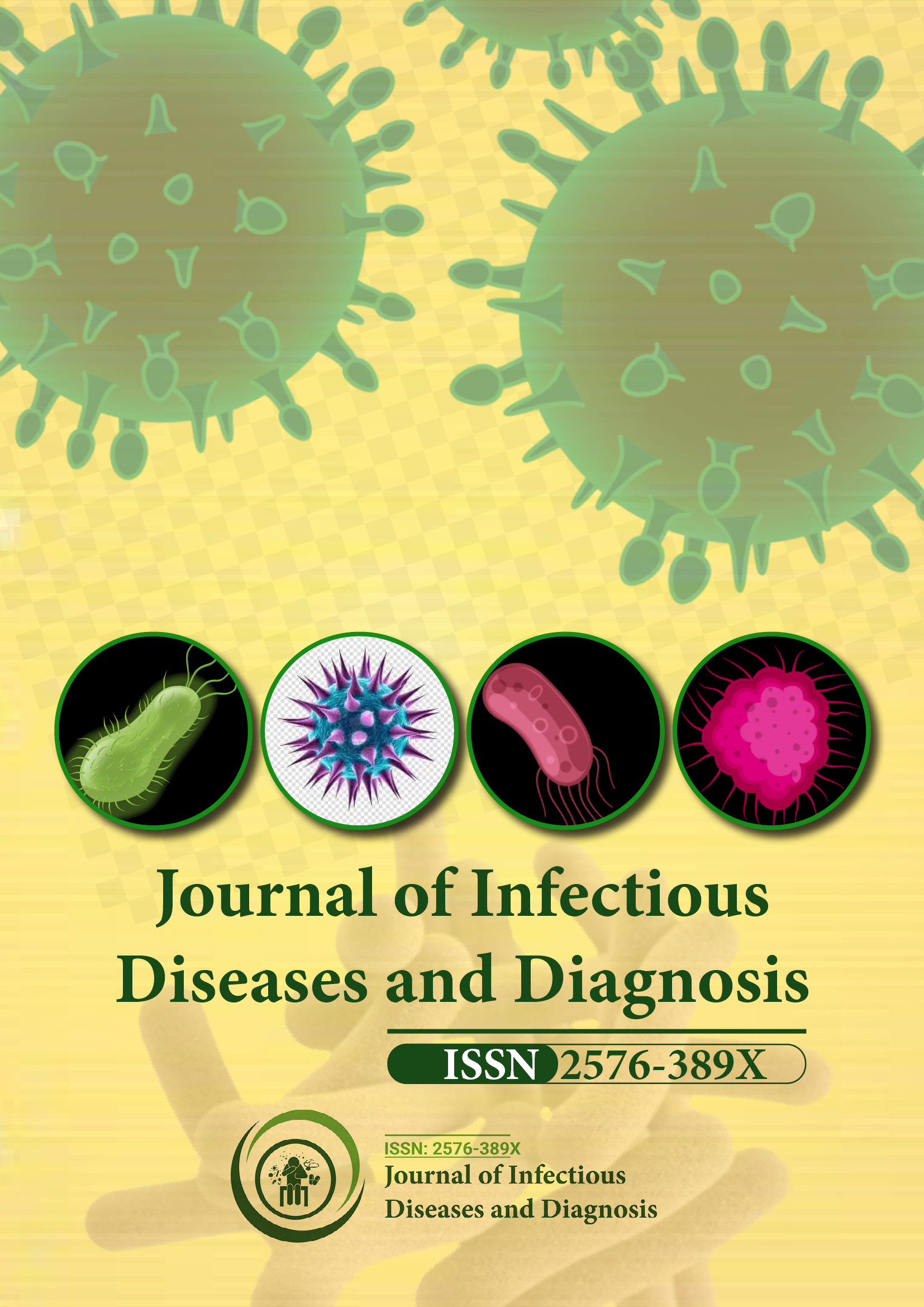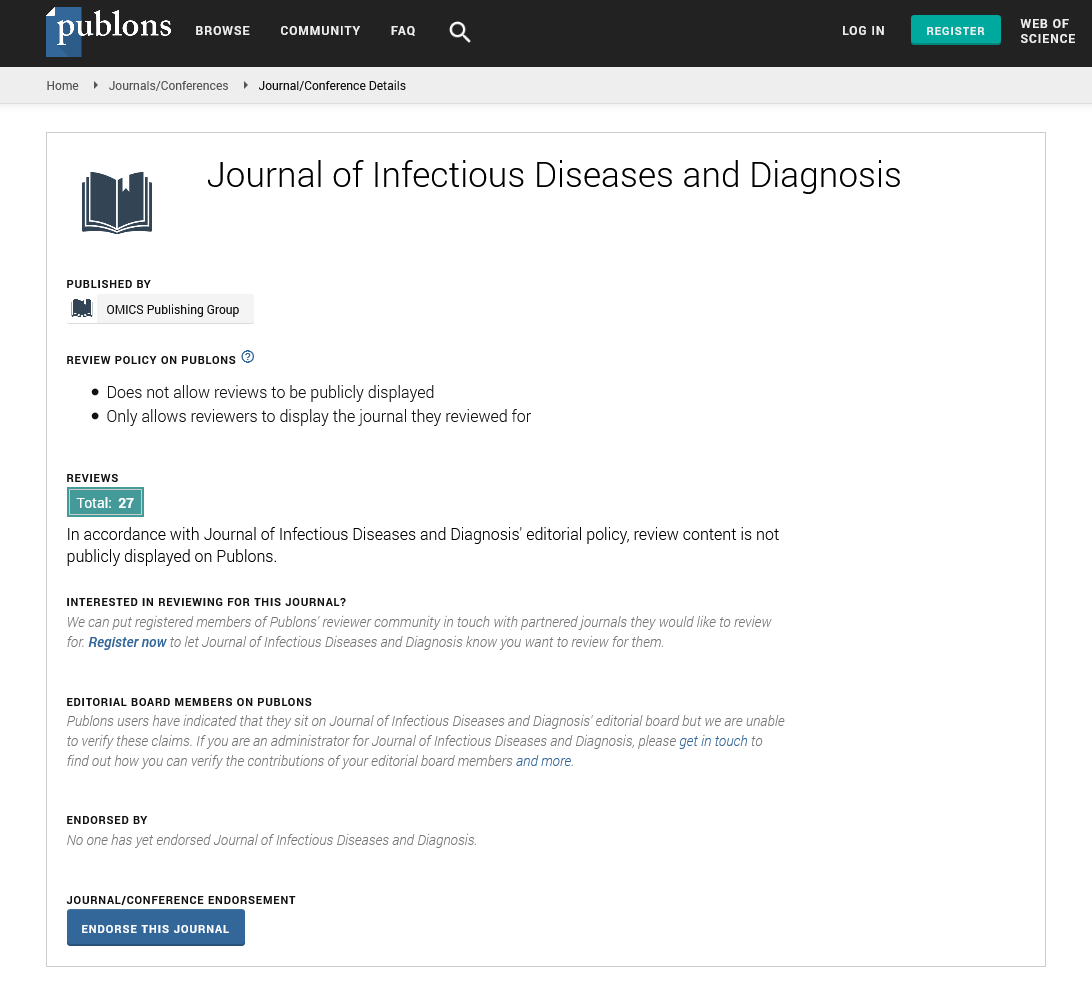Indexed In
- RefSeek
- Hamdard University
- EBSCO A-Z
- Publons
- Euro Pub
- Google Scholar
Useful Links
Share This Page
Journal Flyer

Open Access Journals
- Agri and Aquaculture
- Biochemistry
- Bioinformatics & Systems Biology
- Business & Management
- Chemistry
- Clinical Sciences
- Engineering
- Food & Nutrition
- General Science
- Genetics & Molecular Biology
- Immunology & Microbiology
- Medical Sciences
- Neuroscience & Psychology
- Nursing & Health Care
- Pharmaceutical Sciences
Commentary - (2024) Volume 9, Issue 4
Understanding Hospital Differences in Acute Cholecystitis Treatment Approaches
Matsuoka Kanae*Received: 03-Jun-2024, Manuscript No. JIDD-24-26523; Editor assigned: 05-Jun-2024, Pre QC No. JIDD-24-26523 (PQ); Reviewed: 19-Jun-2024, QC No. JIDD-24-26523; Revised: 26-Jun-2024, Manuscript No. JIDD-24-26523 (R); Published: 03-Jul-2024, DOI: 10.35248/2576-389X.24.09.279
Description
The simultaneous occurrence of HIV/AIDS and COVID-19 has prompted the need for a comprehensive mathematical model to understand and manage these co-infections. The interaction between these two viral diseases presents unique challenges in public health due to their overlapping yet distinct pathologies and impacts on the immune system. This commentary explores into the bifurcation and optimal control analysis of an HIV/ AIDS and COVID-19 co-infection model, highlighting key insights and implications for disease management and control.
Bifurcation analysis
Bifurcation analysis in the context of disease modeling refers to the study of changes in the qualitative or quantitative behavior of a system as parameters are varied. In the co-infection model of HIV/AIDS and COVID-19, bifurcation analysis helps identify critical thresholds where the disease dynamics shift significantly. This can include changes from disease-free states to endemic states, where both infections persist within the population.
For the HIV/AIDS and COVID-19 co-infection model, key parameters include transmission rates, recovery rates, and the interaction between the diseases. HIV/AIDS, known for its long-term impact on the immune system, can alter the susceptibility and progression of COVID-19. Conversely, the acute nature of COVID-19 can affect the immune response in HIV-infected individuals. Understanding these interactions through bifurcation analysis allows researchers to determine conditions under which both diseases can coexist and spread within a population.
One important aspect of bifurcation analysis is identifying the basic Reproduction Number (R0) for both infections individually and in combination. The R0 value indicates the average number of secondary infections produced by one infected individual in a fully susceptible population. When R0 exceeds one for either disease, an outbreak can occur. The co-infection model must consider the combined effects, potentially leading to higher R0 values and more complex bifurcation scenarios. This complexity arises from the interaction terms that represent the influence of one infection on the transmission dynamics of the other.
Optimal control analysis
Optimal control theory provides a framework for determining the best strategies to minimize the spread of infections and their impacts. In the context of HIV/AIDS and COVID-19 coinfection, optimal control involves identifying intervention strategies that can effectively reduce transmission, manage treatment, and allocate resources efficiently.
Control measures in the co-infection model can include antiviral treatments for HIV, Antiretroviral Therapy (ART), vaccination for COVID-19, social distancing, and other public health interventions. The goal is to identify a combination of these controls that minimizes the number of infected individuals and the overall cost to the healthcare system. The cost can be measured in terms of economic impact, healthcare resources, and the burden on patients.
An optimal control analysis involves setting up an objective function that typically includes terms for the number of infected individuals, the cost of interventions, and possible side effects or negative outcomes of the interventions. The control variables are then adjusted to minimize this objective function. For instance, increasing ART coverage might reduce HIV transmission, but it must be balanced against the availability of resources and the need to address COVID-19 simultaneously.
The interaction between HIV and COVID-19 complicates the optimal control problem. For example, immunocompromised individuals with HIV may have different responses to COVID-19 vaccination, necessitating customized strategies. Additionally, the classification of resources must consider the dual burden of both diseases, requiring a fine-tuned approach to maximize the impact of interventions.
Implications for public health policy
The insights gained from bifurcation and optimal control analysis of the HIV/AIDS and COVID-19 co-infection model have significant implications for public health policy. By understanding the thresholds and conditions for disease outbreaks, policymakers can design better surveillance and intervention programs. Early detection and response strategies can be more effectively planned, especially in regions with high prevalence of both diseases.
Moreover, optimal control strategies provide a blueprint for resource allocation, ensuring that interventions are both effective and sustainable. This is particularly important in low-resource settings where the healthcare infrastructure is already burdened. By balancing the interventions for HIV and COVID-19, health systems can improve patient outcomes and reduce the overall disease burden.
Conclusion
In conclusion, the bifurcation and optimal control analysis of an HIV/AIDS and COVID-19 co-infection model offers valuable insights into managing these co-existing epidemics. By identifying critical thresholds and optimal intervention strategies, researchers and policymakers can enhance their approach to controlling the spread of both diseases. This integrated analysis is essential for developing effective public health policies and ensuring the well-being of affected populations.
Citation: Kanae M (2024) Understanding Hospital Differences in Acute Cholecystitis Treatment Approaches. J Infect Dis Diagn. 9:279.
Copyright: © 2024 Kanae M. This is an open-access article distributed under the terms of the Creative Commons Attribution License, which permits unrestricted use, distribution, and reproduction in any medium, provided the original author and source are credited.

